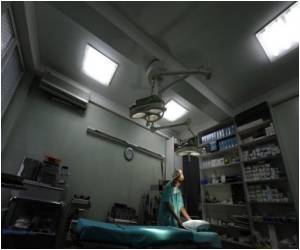The number of children receiving phototherapy has dramatically increased and the risks associated with such a prevalent exposure require close scrutiny.

‘Phototherapy may put infants at an increased risk of developing acute myeloid leukemia and Wilms tumor, a kidney cancer of childhood.
’





He said that clinicians should exercise caution in prescribing the treatment for infants whose jaundice is likely to resolve on its own, however, should not deter use of the treatment, also known as phototherapy, in babies who otherwise would be at risk of brain damage or hearing loss. Despite the inconclusive findings, the editorial notes that the research represents an important and novel approach using "big data" to begin to discern whether environmental factors may be implicated in the development of pediatric cancer.
Two companion studies, also published today in Pediatrics, examined an association between phototherapy and pediatric cancers. The first study, the California Late Impact of Phototherapy Study (CLIPS), analyzed data from five million infants born in California hospitals between 1998 and 2007.
The study used administrative data that linked the billing code for phototherapy and the diagnosis code of childhood cancer. The strongest association is a 1.6-fold increased risk of acute myeloid leukemia (AML). The risk of Wilms tumor, a kidney cancer of childhood, also rose to statistical significance.
The second study -- the Late Impact of Getting Hyperbilirubinemia of photoTherapy (LIGHT) study -- analyzed data from 500,000 children born in the Kaiser Permanente Northern California healthcare system between 1995 and 2011. The associations between phototherapy and childhood cancer were not statistically significant, but an association with AML was again observed.
Advertisement
In both studies, the associations were stronger and statistically significant among children with Down syndrome. Children with Down syndrome are already known to be at an increased risk of leukemia.
Advertisement
Even in the CLIPS study, which found a statistically significant association between phototherapy and childhood cancer, the absolute numbers involved were very low. Of the 5 million infants studied, 58 who received phototherapy later developed cancer.
The increased risk of AML, for instance, was based on 10 cases among the 178,000 children who received phototherapy, versus 103 cases in the 4.9 million children who did not.
"Studying why children get cancer is very difficult because it is such a rare disease," Frazier said. "The association between smoking and lung cancer was relatively easy to detect because the disease is well over 10 times more common than childhood cancer. There are about 225,000 new cases of lung cancer a year in the United States, versus 15,000 new cases of pediatric cancer."
"Thus, to study childhood cancer, a scientist needs to find a way to study large populations. The authors are to be commended for finding a way to do just that. But even in these studies of huge populations, the number of children who actually develop cancer remains quite small."
Despite the small numbers, the editorial advises clinicians to weigh a possible link with cancer in determining which babies need phototherapy.
"In the end, acknowledging that the information is imperfect, general pediatricians and neonatologists must make a choice," the editorial concludes. "These data suggest that phototherapy may not be harmless, and that the risks as well as the benefits need to be weighed before flipping the switch."
Source-Eurekalert














